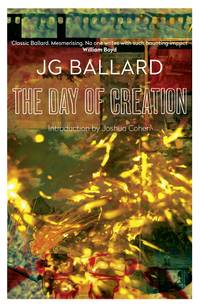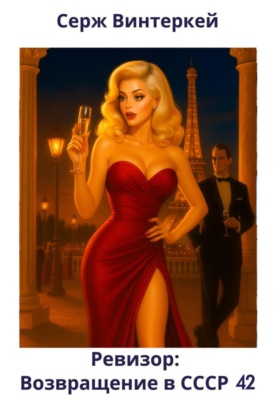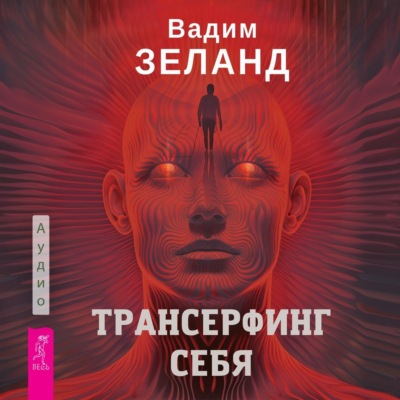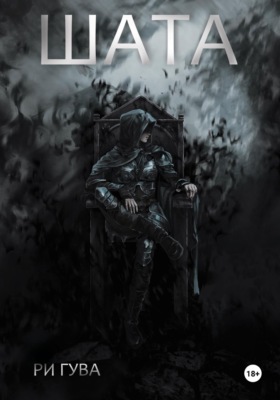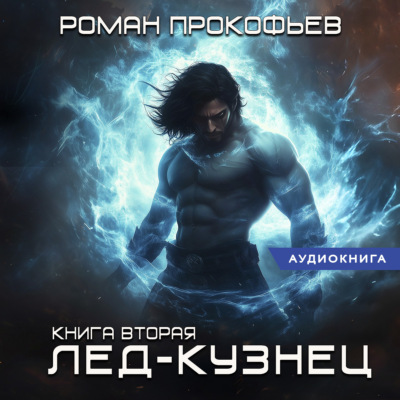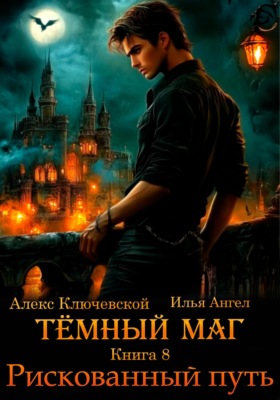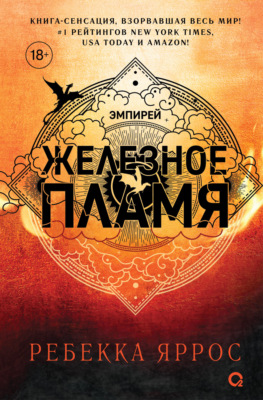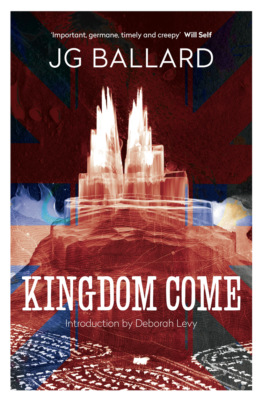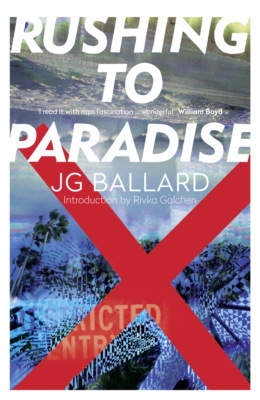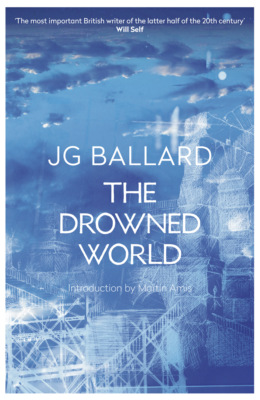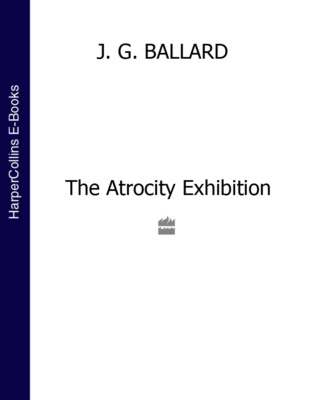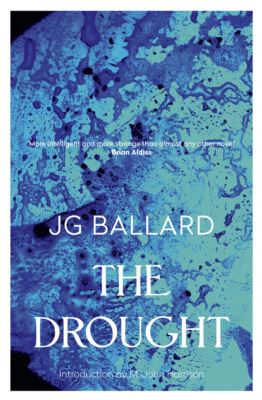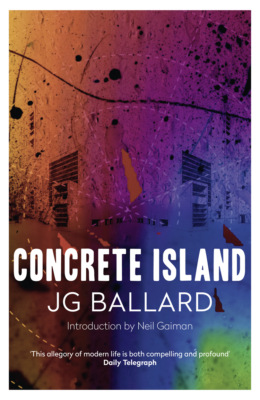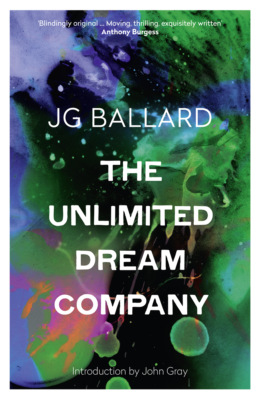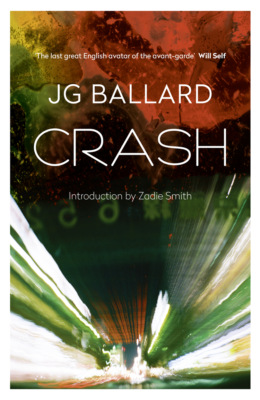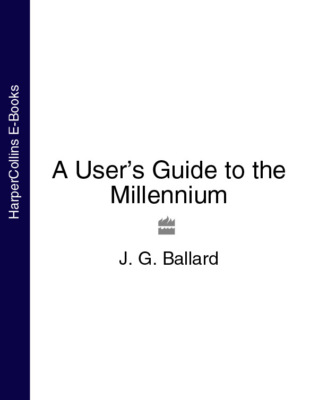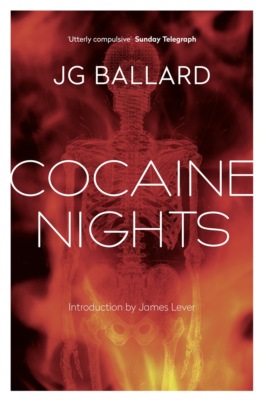Buch lesen: "The Day of Creation"
J. G. BALLARD
The Day of Creation

Fourth Estate
An imprint of HarperCollinsPublishers 77–85 Fulham Palace Road London W6 8JB 4thestate.co.uk
This edition published by Fourth Estate in 2014
First published in Great Britain by Victor Gollancz 1987
Copyright © J. G. Ballard 1987
The right of J. G. Ballard to be identified as the author of this work has been asserted by him in accordance with the Copyright, Design and Patents Act 1988.
Introduction copyright © Joshua Cohen 2014
Interview copyright © Travis Elborough 2006
A catalogue record for this book is available from the British Library.
This novel is entirely a work of fiction. The names, characters and incidents portrayed in it are the work of the author’s imagination. Any resemblance to actual persons, living or dead, events or localities is entirely coincidental.
All rights reserved under International and Pan-American Copyright Conventions. By payment of the required fees, you have been granted the non-exclusive, non-transferable right to access and read the text of this e-book on-screen. No part of this text may be reproduced, transmitted, down-loaded, decompiled, reverse engineered, or stored in or introduced into any information storage and retrieval system, in any form or by any means, whether electronic or mechanical, now known or hereinafter invented, without the express written permission of HarperCollins eBooks.
This book is sold subject to the condition that it shall not, by way of trade or otherwise, be lent, re-sold, hired out or otherwise circulated without the publisher’s prior consent in any form of binding or cover other than that in which it is published and without a similar condition including this condition being imposed on the subsequent purchaser.
HarperCollinsPublishers has made every reasonable effort to ensure that any picture content and written content in this e-book has been included or removed in accordance with the contractual and technological constraints in operation at the time of publication.
Cover by Stanley Donwood.
Overlaid image partly derived from combustion of ammonium dichromate, carried out by Dr Roy Lowry at Plymouth University; photographed by Anna Walker.
Ebook Edition © JUNE 2010 ISBN: 9780007290116
Version: 2014-09-25
Praise
From the reviews of The Day of Creation:
‘It could only have been imagined by a master of visionary realism…a country of the mind as vivid and viable as anything this extraordinary writer has ever produced’
Spectator
‘Ballard continues to prove that his imagination is unmatched by any contemporary British writer. His vision is relentless. Ballard’s acrid landscapes of a surreal and glittering Africa disturb as well as entrance. The obsessive desires of the hero, Dr Mallory, are equalled only by the compulsion Ballard’s creative genius has to write’
Glasgow Herald
‘Part spellbinding story, part fable for our time, Ballard’s novel is a vividly cinematic but nightmarish vision of a corrupted world. In a narrative filled with ironies, Ballard’s prose is honed and supple, often flowering into vivid lyricism. A mesmerizing tale by a master of the craft, one that resonates with dark implications for the future of humanity on this planet’
Publishers Weekly
Contents
Title Page
Copyright
Praise
Introduction by Joshua Cohen
1 The Desert Woman
2 The Gunmen
3 The Third Nile
4 The Shooting Party
5 Fame
6 The Oak and the Spring
7 The Impresario of Rubbish
8 The Creation Garden
9 The River Mallory
10 The Cascade
11 The House of Women
12 Noon
13 Piracy
14 Out of the Night and into the Dream
15 The Naming of New Things
16 The Helicopter Attack
17 Escape
18 The Green World
19 The Lanterns at Dusk
20 The Documentary Film
21 The Skirmish
22 Into the Lagoons
23 Journey Towards the Rain Planet
24 A Dream of Fair Women
25 The Wildfowlers
26 The Gardens of the Sahara
27 The Stolen Channel
28 Doctor Mal
29 The Blue Beaches
30 The Arcade Peep-Show
31 The Death of the Diana
32 The Poisoned Valley
33 The River Search
34 The Source
35 Memory and Desire
Interview with J. G. Ballard
About the Author
By the Same Author
About the Publisher
Introduction
by Joshua Cohen
1
‘Dreams of rivers, like scenes from a forgotten film, drift through the night, in passage between memory and desire.’
Or, better, let’s set it like a poem:
Dreams of rivers,
like scenes from a forgotten film,
drift through the night,
in passage between memory and desire.
Now it reads less like a first sentence – which it is, the first sentence of J. G. Ballard’s The Day of Creation – and more like the novel’s displaced epigraph.
Now we can begin, and I’ll gush about this and leak about that and then this introduction will trickle to an end and you’ll begin the novel proper only to find that sentence again and perhaps you’ll feel – perhaps you’ll feel now that I’m exhorting you to – the prosodic ebbs and flows of water. The opening sentence of Finnegans Wake is the continuation, the circumfluence, of its closing sentence. Joyce’s first page begins: ‘riverrun, past Eve and Adam’s, from swerve of shore to bend of bay, brings us by a commodius vicus of recirculation back to Howth Castle and Environs.’ His last page ends: ‘A way a lone a last a loved a long the’
No capitalization at top, no punctuation at bottom.
Of course, Joyce also wrote poetry and his prose was ‘poetic’ – whereas we read Ballard for a pitilessly mass-produced language more suitable to ‘the contemporary’. Or we assume we do (or we assume pitiless mass-production is more suitable), because the stark sad thingness of drainage culverts and overpasses and parking lots and empty swimming pools – empty except for the junkfood wrappers and condoms and cigpacks and bottles – too often overwhelms the ambient mosquito music abounding.
Prose lets us see and poetry lets us hear but the best of both do both at once, though so does 3D IMAX with Dolby Digital.
So, ‘like scenes from a forgotten film’ – what does Ballard mean? Who forgot this film and why? Rather, is this line disposable? Or is a brackish meaning bubbling behind it? In film, by which I mean mostly in Hollywood, when everything’s been shot and edited and even reshot and re-edited and test audiences still can’t understand what the hell’s going on, directors or, frequently, producers in conflicts with their directors, seek to salvage the thing either by introducing voice-over – from the hero, perhaps, or an omniscient God-narrator, explaining, ‘An hour before dawn, while I slept in the trailer beside the drained lake, I was woken by the sounds of an immense waterway’ – or by slapping together a title card that proclaims: ‘Africa, The Present.’
‘Like scenes from a forgotten film’ strikes me as Ballard’s equivalent of this technique. The line introduces a first-person narrator (first-person is literature’s overdubbing), while it also serves to reorient – or deoccident – you, the reader, for whom film, or TV – the screen – has become so primary a medium as to be beyond second nature: The mediation has become Nature Itself.
After that line Chapter 1 continues its cinematic panning:
As on all weekend visits to the abandoned town, I was seized by the vision of a third Nile whose warm tributaries covered the entire Sahara. Drawn by my mind, it flowed south across the borders of Chad and the Sudan, running its contraband waters through the dry river-bed beside the disused airfield.
But everything’s so vivid that you’d be forgiven for not having noticed that the theatre you’re in is still just a skull: one man ‘seized by the vision’, a Nile ‘drawn by my mind’. It’s as if we have to be ensconced in an imitative darkness before that line about film is granted its literal justification, in the midst of the chapter: refugees from the Sudan are feeding campfires with wood stripped from a police boat, using ‘strips of celluloid left behind by the film company’ as accelerant.
2
In 1984 Ballard published his first and only overtly autobiographical novel, which was also his first and only mainstream success, Empire of the Sun. In 1987, the film version appeared, and Ballard’s next novel was published – The Day of Creation, whose somniloquent symbolism alienated whatever new audience Empire had earned, and failed to interest the old audience already alienated by the Hollywoodization – the Spielberging – of a cult author and genre-totem (who was also a 57-year-old single father of three). The Day of Creation has never been filmed, though it’s already a series of action scenes strewn with dialogue sparse enough for the markets abroad. What augurs against adaptation, however, is that it has no elevator-pitch – no plot.
The hero of The Day of Creation is Dr Mallory, a Brit born in Kowloon, Hong Kong (Ballard was born in Shanghai), trained in Ireland as a physician (Ballard trained at Cambridge to be a physician), who now administers a clinic for the World Health Organization in Port-la-Nouvelle, the second city/shantytown of an unnamed, formerly French colonial ‘war-locked nation, that lay between the borders of Chad, the Sudan, and the Central African Republic in the dead heart of the African continent’. That war pits General Harare’s guerilla units against a paramilitary police force commanded by Captain Kagwa. Repeated clashes have wrecked Port-la-Nouvelle’s viaducts and reservoir, left the local Lake Kotto dry, and sent the engineers involved with irrigation drilling fleeing back to Belgium. Mallory is captured and about to be executed by Noon, a prepubescent girl and Harare rebel, but her rifle jams, and her co-revolutionaries scatter to the forest with the arrival of Kagwa’s squadrons and the landing of a twin-engine Dakota chartered to Air Centrafrique. Mallory’s life is saved, or his death is, with a popcorny fortuity. If the rifle had functioned properly the rest of the novel would’ve been the soul’s passage through delirium, and all its waterways would be the Styx.
The Dakota’s passengers are Professor Sanger, an Australian-German ‘sometime biologist turned television popularizer’, and his Indian protégé Mr Pal, who’ve come to deliver five tons of rice donated by West Germany – to a populace that has never eaten rice, to an uninhabited town – and to make a self-financed documentary – about the war, about Kagwa, about anything – for Africa Green, a ‘television charity’, which maintains ‘satellite links with the major Japanese networks’.
Sanger settles for producing agitprop by and about and even for Kagwa – a viewership of one. Mallory, meanwhile, maniacally schemes to reverse the drought. Literature teems with mad mariners – Mallory is its foremost mad hydrologist. He suspects, or prophesies, an underground limestone aquifer, and in the course of his divination campaign orders one of Kagwa’s sergeants to remove the stump of an ancient fallen oak. The tractor extracts the gnarled root-bole – ‘like the petrified heart of an extinct bull, or the crown of an underworld deity ripped from the ceiling of a subterranean palace’ – and exposes ‘an open mouth wide enough to swallow a small car’. But then water fills the cavity, black water, which gradually overflows it, and floods Lake Kotto, and washes the earth blank of its town: boats become the only tenable dwellings, as the Sahara engreens into ‘an Eden’.
Mallory purchases the river from Kagwa for $1000 US. Sanger senses an opportune subject for his documentary, and shoves his camera and mic in the doctor’s face, but only after he registers the river with the National Geographic Society in Washington, DC, naming it the Mallory. Noon, whether out of penance for her execution attempt, or in gratitude for the H20, assists Mallory in commandeering a car-ferry, the Salammbo, and the two depart toward the river’s source, their objective changing like a stream of consciousness, or becoming a stream of consciousness: One moment Mallory wants to dam the Mallory, the next he wants to destroy it.
All of the above happens in a hundred or so pages. The nearly two hundred pages remaining are pure journey: Kagwa’s pursuit (to reclaim the car-ferry, which contains the Mercedes he bought with the river funds); Harare’s skirmishing; Sanger and Pal coming aboard to collect their leagues of unscripted footage, and the overtaking of the Diana: a ‘brothel-ship’, formerly patronized by oil-riggers, and now under the commission of Mrs Warrender, another Brit, another white, who’d superintended the animal breeding station with her Rhodesian husband, until he was slaughtered …
3
Think back, now, to the way movies used to be – not on computers, but in halls – not digital, but analogue, a succession of frames flowing off a reel like water until all that was left was a flume of hot white light projecting its pristination at a screen. Think back to the size of the screens and so to the size of the people on them – people firmamental, stars – skygods enacting myths in perpetual sequel.
What I mean is: Apocalypse Now. Directed by Francis Ford Coppola in 1976 but released only in 1979. Apocalypse Now features title cards and is narrated by Captain Willard (Martin Sheen), who is dispatched upriver – the fictional Nung River – to terminate Colonel Kurtz (Marlon Brando), who has ‘gone native’, and formed a private militia to fight his private wars. The film’s production was notoriously plagued: principal photography in the Philippines was interrupted by typhoon season; Harvey Keitel was fired (for reasons never publicized), and replaced by Sheen, who promptly had a heart attack; Brando showed up unprepared, obese, and with his head shaved; Dennis Hopper, who plays a traumatized photojournalist, was method acting his way through a coke-binge. At least ‘the extras’ were reliable – scores of Vietnamese who’d fled one violent insurrection for another. President Marcos regularly demanded the return of the army helicopters the production were renting, which he scrambled to surveil and even strafe the New People’s Army of the illegal CPP, the Communist Party of the Philippines. This drama behind the drama made its way into a documentary assembled by Eleanor Coppola, in which her director-husband can’t stop himself from airing the resemblance between the psychologies of artistic creation and military-industrial destruction: ‘We were in the jungle, there were too many of us, we had access to too much money, too much equipment, and little by little we went insane.’[1]
Hearts of Darkness is the title of that making-of documentary, and it’s obvious to everyone sweating in it – except Brando, who refused to do any reading – that Apocalypse Now is based on Conrad’s Heart of Darkness. In that novella, Marlow, the original of Willard, steamboats up the Congo River scouring the rainforest for the rogue ivory-trader, and slaver, Kurtz. In Conrad’s telling neither Marlow nor Kurtz are elite soldiers, but are or were employees of ‘the Company’, and the setting is the Central African Congo Free State, which was, in fact, a corporation wholly owned and operated by Belgium. Another liberty Coppola took: his Kurtz is assassinated by Willard, while the page-bound Kurtz dies slowly, and Marlow falls ill, from ‘an impalpable greyness’, ‘a sickly atmosphere of tepid scepticism’. Heart of Darkness was serialized in 1899, and republished in 1902 as the middle novella of a trilogy that bridged the stages of terraqueous life: preceding it is Youth, in which the foreign is exotic, yet nurturing; following it is The End of the Tether, in which the foreign has become indistinguishable from home and the only Empire left is a watery grave. Between the two fictions – between birth and death – is dream: ‘It seems to me I am trying to tell you a dream – ’ Marlow says, ‘making a vain attempt, because no relation of a dream can convey the dream-sensation, that commingling of absurdity, surprise, and bewilderment in a tremor of struggling revolt, that notion of being captured by the incredible which is of the very essence of dreams … ’
Heart of Darkness, of course, has its own ur-versions, its own unconscious – in the legends that European and Anglo-American writers translated from, and were inspired to invent by, the African and Asian cultures they nonetheless regarded as ‘primitive’, or ‘inferior’. Stay close, because we’re approaching the Inmost Station.
We have stories about treasure hunters who leave their lands and wander the globe, only to be recalled by a dream of a willow in their house’s yard, under which a hoard of gems is buried; we have tales of hunters slaying wild boars whose carcasses metamorphose into the corpses of fathers. Then there’s ‘My First Day in the Orient’, an essay of around 1890 by the half-Greek, half-Irish Lafcadio Hearn, who spent two decades as a reporter and English tutor in Japan:
Then I reach the altar, gropingly, unable yet to distinguish forms clearly. But the priest, sliding back screen after screen, pours in light upon the gilded brasses and the inscriptions; and I look for the image of the Deity or presiding Spirit between the altar-groups of convoluted candelabra. And I see – only a mirror, a round, pale disk of polished metal, and my own face therein …
An adventurer seeks the divine, and finds himself instead. Tug aside the curtain, and the man is the Maker, and the Maker is the man – ‘The horror! The horror!’
Imagine if Apocalypse Now was filmed again with state-of-the-art CGI, so that Willard survives his river cruise only to discover that he is Kurtz. (Which would’ve been preferable, if Sheen had played both the roles? Or Brando?)
Imagine Heart of Darkness rewritten so that Marlow makes the same discovery – and now he is foundered, crazed, suicidal.
All this brings us, by a commodius vicus of recirculation, back to The Day of Creation, in which Mallory (which is ‘Marlow’ mixed with ‘Ballard’) sets out toward the source of his river, which might not be Lake Chad or the mountains of the Massif, but his own deluged deluded brain: malnourished, fevered. The River Mallory is the doctor’s crosscurrent double, an inconstant, alternately reflecting/reflected ‘black mirror’. ‘I tried to stand back from my own obsession,’ Mallory says, ‘but I could no longer separate myself from my dream of the Mallory.’
In the first book of the first of the books, the Bible, ‘The Day of Creation’ occurred a full week before Paradise even existed: ‘And the earth was without form, and void; and darkness was upon the face of the deep,’ and everything would’ve been perfectly peaceful, if God hadn’t said, ‘Let there be light’ – and there was light. Ballard’s novel reminds us that we’ve suffered ever since for our projections.
Brooklyn, March 2014
1. Around 1969, George Lucas tried to make a version of the John Milius script, but his proposal to shoot it in 16mm as a pseudo-documentary on location in South Vietnam, with the war still in progress, found no support at the studios. Coppola channeled this conceit through a brief cameo in his own movie as a telejournalist yelling at Air-Cav soldiers who’ve just razed a village: ‘Don’t look at the camera! Just go by like you’re fighting!’ In 1971, Dennis Hopper released The Last Movie, which he directed and starred in as ‘Kansas’, a stuntman on a Western being filmed in Peru. Kansas stays on after the production has wrapped, and makes an attempt at a calmer if romanticized life with a native prostitute. Their idyll is threatened, however, once an indigenous tribe, misunderstanding the Hollywood fakery, fashions equipment out of bamboo and starts ‘filming’ a Western in which the violence isn’t staged, but fatal.
